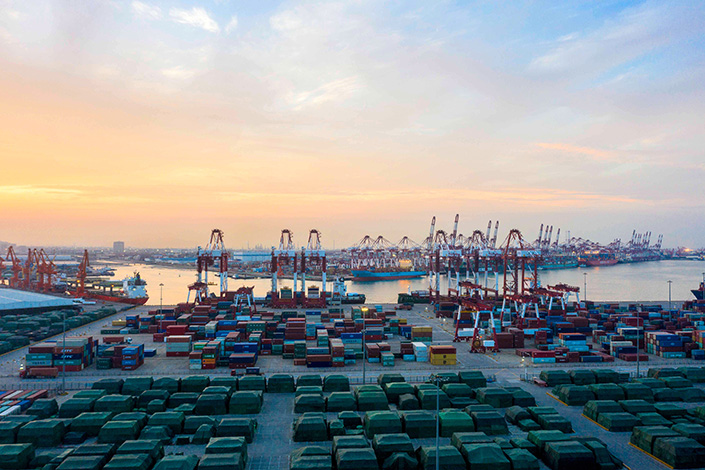Opinion: Why China Can Avoid Massive Economic Stimulus

The Chinese economy has sailed through turbulent waters in the past two years. This round of turmoil, in which China has sustained the massive impact of a trade war against the U.S. and Covid-19, has already dissipated, despite some lingering effects.
It is to China’s advantage that the government was spared the financial burden of economic stimulus and yet is still able to deliver a strong economic recovery through exports and effective control of the pandemic. This article assesses China’s economic recovery through analyzing macroeconomic data.
Firstly, in terms of government revenue and expenditure, the Chinese government has been slowing the expansion of its spending in comparison to GDP growth. On one hand, the government earned 9.6 trillion yuan ($1.48 trillion) and spent 9.4 trillion yuan in the first five months of 2021. In the same five-month period in both 2021 and 2020, revenue was up 3.6% year-on-year on average and spending rose 0.3% year-on-year. This indicated that the government had adopted a contractionary fiscal policy, in which it expanded its revenue more than its spending in the face of prevailing economic challenges. On the other hand, the growth of government spending was far outpaced by GDP growth, which jumped 5% year-on-year on average in the first quarter of both 2021 and 2020 in real terms, or 7.1% in nominal terms. This contrasted starkly with China’s fiscal policies between 2009 and 2010 in the aftermath of the global financial crisis and those of other major economies in the past two years.
Secondly, exports, which eclipsed domestic consumption and investment, became the most significant of the three main drivers of the Chinese economy. In the first five months of both 2021 and 2020, exports expanded 11.3% year-on-year on average in yuan terms, nearly double the speed of this year’s first-quarter GDP growth.
The China-U.S. trade war in 2019 might have rendered Chinese exports bleak. However, China’s prompt containment of the pandemic allowed it to quickly resume production and transport and utilize the comprehensive strength of its supply chains to outcompete its foreign rivals beleaguered by the pandemic, increasing the global market share of its exports. It is, nonetheless, largely uncertain whether this trend can sustain in a long-term post-Covid era.
Thirdly, domestic consumption recovered despite the adverse impacts of the pandemic. Retail sales in the first five months of 2021 climbed at an annual average of 4.3% year-on-year from the same period in 2019, lower than the annual average of 8% before the pandemic and GDP growth in the first quarter. This was due chiefly to the impact of anti-epidemic measures on restaurants. In addition, retail sales of major consumer goods, including automobiles, petroleum and related products, household appliances, and garments, fell from the same period in 2019, while retail sales of food, beverages, household commodities, and communication appliances increased considerably year-on-year.
All in all, the increase in retail sales of communication appliances may be the result of 5G smartphone replacements, while there were other increases in the sales of necessities. High-priced non-necessities, such as automobiles, may still be experiencing a rebound from economic recovery. It is expected that restaurants and travel will continue to recover if the pandemic stays under control with easing anti-epidemic measures, while high-priced goods will pick up momentum if the economy sees stable growth in the future. The pandemic and anti-epidemic measures will therefore influence domestic consumption in one to two years.
Lastly, infrastructure investment through government spending had not become the primary source of economic growth as expected. A consensus in the market was reached a year ago that the Chinese economy should be relieved from the pandemic through infrastructure investment. This was contradicted by an annual average growth rate of 5% in the first five months of the year from the same period in 2019. The figure, lower than the first-quarter GDP growth, was due to minimal growth in larger projects, such as transport, public facilities, and communication, while noticeable increases were concentrated in smaller social welfare projects, such as education and healthcare.
The question about whether China’s advantages could sustain the economic growth depends on three factors. Firstly, how much global trade will be left for China when its competitors fully recover from the pandemic? Secondly, the strength of Chinese exports may not be sustained if the country’s industrial capacities are not enlarged with future investment, in which there has been little growth in the past five months. Lastly, domestic consumption is the long-term driver of the Chinese economy, and it depends on the conditions of the pandemic. If the pandemic ends, there will be continual recovery in consumption. If it persists, striking a balance between pandemic control and boosting consumption will be a far more complicated puzzle for China to solve.
Vincent Chan is a China strategist at investment advisory firm Aletheia Capital and a former head of China equity strategy at Credit Suisse. This commentary has been edited for length and clarity.
Translated by Liao Zhaolong.
Contact editor Lin Jinbing (jinbinglin@caixin.com)
The views and opinions expressed in this opinion section are those of the authors and do not necessarily reflect the editorial positions of Caixin Media.
If you would like to write an opinion for Caixin Global, please send your ideas or finished opinions to our email: opinionen@caixin.com
Download our app to receive breaking news alerts and read the news on the go.
Get our weekly free Must-Read newsletter.

- MOST POPULAR






